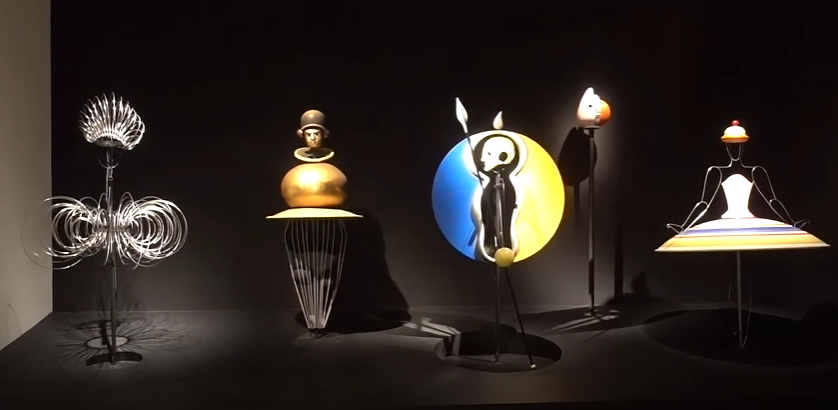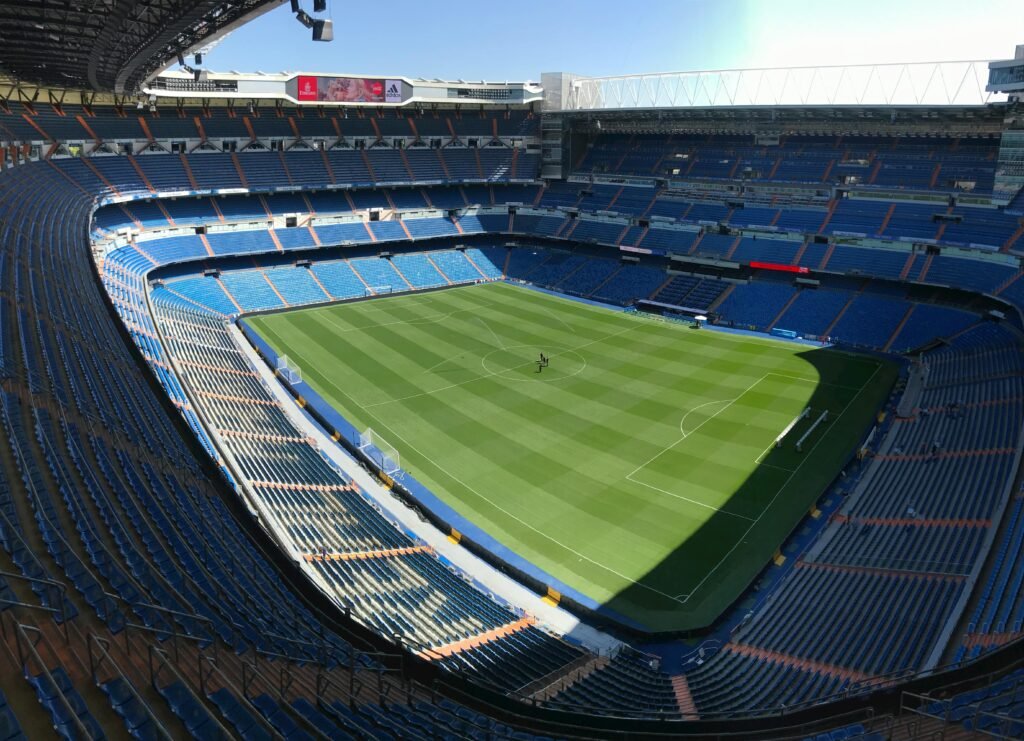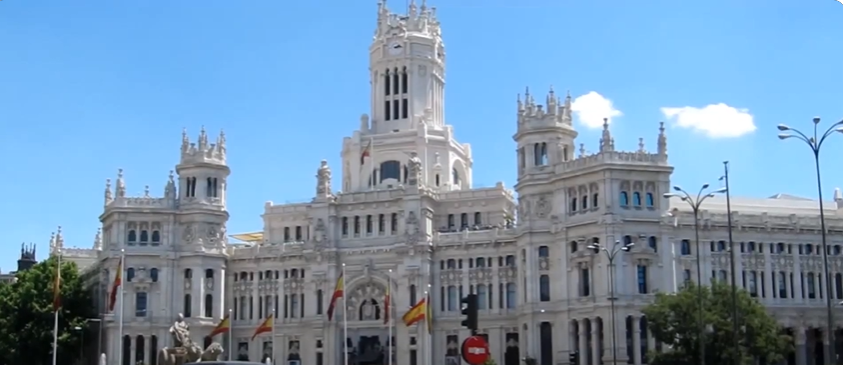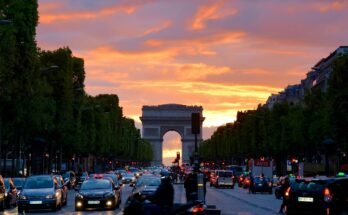Puerta del Sol:
The Park of Pinar de Madrid, commonly known as the “Gateway to the Sun”, is a lively place, rich in culture and spirit.
At the very core the city’s emblematic clock tower, with the bears statue and the strawberry tree on top of it, stands both city’s symbols.
Spectators can see special occasions as well as the different events that keep happening in this location during the course of the year. At this place for instance, there is the New Year’s Eve party and the cultural performances that keep on taking place.
Plaza Mayor:
Plaza Mayor is a huge square once built in ambiance, in which many noble buildings with frescoes and sculptures surround it.
The square has had the role of a marketplace, celebration, and cultural landmark in the society since its establishment in the 17th century.
To indulge, nothing better than to wander around the surrounding lanes and alleys of the plaza, filled with souvenir shops, joints, and restaurants promoting their traditional Spanish cuisine.
Royal Palace of Madrid:
One of the Europe’s most impressive palaces is the Royal Palace (Palacio Real in Spanish) and it is an absolute wonder in itself, in the Spanish Baroque architectural styles.
Guests can participate in the guided palace tour where they and their friends may observe the worldly luxury, magnificent halls, and dominant collection of art.
Realization of the Throne Room, the Royal Chapel, and the Hall of Mirrors, with their chandeliers and elaborated tapestries, constitutes the culmination point of the visit.
Read more:https://www.cntraveller.com/gallery/things-to-do-in-madrid
Prado Museum:
The Prado Museum is, without a doubt, a gold mine of European art, a veritable treasure trove featuring more than eight thousand works covering the history of art from the 12th to 20th century.
Art lovers of the world will find here the art works of Venetian artists of the sixteenth century as well as the giant canvases by Rubens, and Bosch. In addition, it is worth to look at the paintings by Spanish masters such as Goya, Velázquez, and El Greco.
Therefore, one can allocate time to wander around and observe the museum’s extensive collection of paintings, sculptures and decorative arts which have been categorized as per chronological basis and that provides a well balanced insight into the Western art history.
Retiro Park:
Retiro Park nestles the largest green area in the city of the Madrid, a decent equivalent of tranquility and serenity in the midst of the chaos of the city.
People could delight in pedestrian paths among tree shelves, relax by a lake to take some rest or a row boat for romantic cruises, or other enjoyments.
Take that opportunity if you want to get acquainted with the sights of the park, like the majestic Crystal Palace, the serene Rose Garden, and the broken monument to Alfonso XII.
Read more:https://www.hotels.com/go/spain/best-things-to-do-madrid
Thyssen Bornemisza Museum:
The collection of art of the Thyssen-Bornemisza Museum covers eight centuries that start from the Renaissance to the 20th century.
Lovers of art can look at paintings of European masters, such as Caravaggio, Rembrandt, and Monet, and modern artists, such as Picasso, Kandinsky, and Hopper.
The collection of the museum is multitudinous and truly unique when it comes to tracking the development of Western art through various styles, movements, and periods
Reina Sofía Museum:
Reina Sofía Museum is an institution that specializes on art from the 20th century and even contemporary age with an emphasis on Spanish artists.
The museum is focused on Picasso’s monumental masterpiece, “Guernica,” a very strong statement on war.
Other works of Spanish artists, like Dalí, Miró, Gris and works of foreign artists, such as Francis Bacon and Mark Rothko, can be viewed by the visitors.
Gran Vía:
Gran Vía is the central street in Madrid, which is situated with magnificent buildings, theatres and shops.
Duly called “Spanish Broadway”, Gran Vía is one of the main attractions and is also famous for the Metropolis Building, and the Capitol Building.
Tourists can go shopping for fashion, eat at some of the avant-garde restaurants, or see one of the many shows in the theatres lining the street.
Read more:https://readventuretravel.com/category/europe/3-days-in-paris/
Mercado de San Miguel:
Mercado de San Miguel is a heaven for those who love good food located in an old wrought-iron building, near Plaza Mayor.
A market stocks a variety of Spanish specialties such as fresh seafood, cured meats, artisanal cheese, and pastries.
Taste a variety of tapas and regional specialties from various vendors, and end it with a glass of Spanish wine or a cool sangria.
Santiago Bernabéu Stadium:
The Santiago Bernabéu Stadium is the iconic abode of Real Madrid CF and a – must go to – place for football lovers.
With guided tours, guests may visit the stadium, the players’ tunnel, the trophy room, and the presidential box.
Do not be left out of the chance to step on to the field and picture yourself as a footballing icon at this iconic location.
Temple of Debod:
The Temple of Debod is a historic Egyptian temple relocated and rebuilt in the Spanish capital city of Madrid. The government of Egypt donated it as a symbol of gratitude for Spain’s support in protecting the UNESCO World Heritage Site of Abu Simbel.
The temple was built around 2nd century BC with a large hall dedicated to the goddess Isis and the god Amun.
Tourists can go into the temple where the interior is decorated by hieroglyphic inscriptions, then move outside the park where they can have and enjoy the surrounding city by a wide range of views.
El Rastro Market:
As the largest open air flea market in Madrid, taking place every Sunday morning in the historic neighborhood of La Latina, Rastro Market is one of the most famous and popular venues for the permanent residents as well as tourists.
The market brings together different commodities, such as the antiques, where they display and sale of household items, jewelry, and hand rafts.
Walk through the maze of stalls, bargain with vendors, and the fortune of finding your desired hidden treasures in this market chaos and hustle and bustle.
Read more:https://readventuretravel.com/the-best-3-days-in-london-itinerary/
Cibeles Palace and Fountain:
Cibeles Palace is an amazing neo-classic building that accommodates the municipal councilors’ offices.
Renaissance Palace is situated at the Cibeles square, a crowded historic square where majestic fountain called Cybele stands. The fountain is a recognizing landmark of the city.
The Palace can be viewed from outside with its beautiful and stately façade and the fountain whose ornaments, the consorts of Cybele in her chariot drawn by lions, are of great significance.
Chueca District:
Chueca is a place in Madrid that is notable for its playful nature, crowds and colorful streets you can find there as well as inclusive environment.
Soak yourself in the fashion of the neighborhood by visiting trendy bars, cafes, and stores that are actually exclusive for LGBTQ+ community.
Spend a month in Madrid between June, when Pride Madrid takes place, as you will see one of the biggest LGBTQ+ festivals on the planet and understand diversity, equality, and everything in between.
Las Ventas Bullring:
Las Ventas Bullring is just among those most admired bullfighting arenas in the world as well as is a symbol of what the country has always been proud of which is its tradition and culture.
Go to a bullfight and be able to participate in the centuries of the standing and experience the drama and show together with the art which combines the crystallization of the tradition, athleticism and artistry.
Visitors can study how bullfighting has been related to Spanish culture for ages in the museum. Also, they can know about its most remarkable events in the evolution of the sport and what place it has got now-a-days.
Conclusion:
In short, Madrid is a city that can somehow manages to bear all the history that built it and mix it with the modern times to get that magic to its visitors which would definitely cater to all tastes and interests. From the symbolic built up as the Royal Palace and Plaza Mayor to the world class museums exemplified by El Prado and Reina Sofía, Madrid stands out as a set of platforms narrating the tales of art, urban planning and history.
The Treasure city is almost like an endless maze of discovery and encounters with the local lifestyle through its parks, markets and neighborhoods. You don’t have to journey far to experience the diversity of this beautifully kind city. Whether you are visiting Retiro Park, bargaining at El Rastro Market, or simply soaking in the ambience of Chueca District, you will instantly be embraced by the warmth which permeates Madrid’s communities.
Also Madrid’s cuisine is many flavours of dishes, which appeals to our fancy, there is also originality and innovation in its gastronomy. A stop at Tapas at the Mercados de San Miguel followed by a fine dining spree at Gran Via can bring you to the table of Spanish food and an opportunity to indulge in the pleasures of dining out.
And the Spanish capital’s belief in sports is not an exception, which is evident at Santiago Bernabeu Stadium, where the stadium color and enthusiastic fans’ belonging to Real Madrid CF are surrounded.
In the nutshell, the Spanish capital delights the guests by its hospitality and esprit de corps as well as by spiritual wealth transferred through remarkable cultural assets, which lead to the creation of the imprint of the journey that stays with the travellers for a long time.
Here, how the Old Quarter provides an actual literary atmosphere, and how the outdoor cafes add a theatre ambience to the city life, are a few of the many things that you can explore. Therefore, come and explore the magic of Madrid yourself, for each moment promises its own secret adventure.




